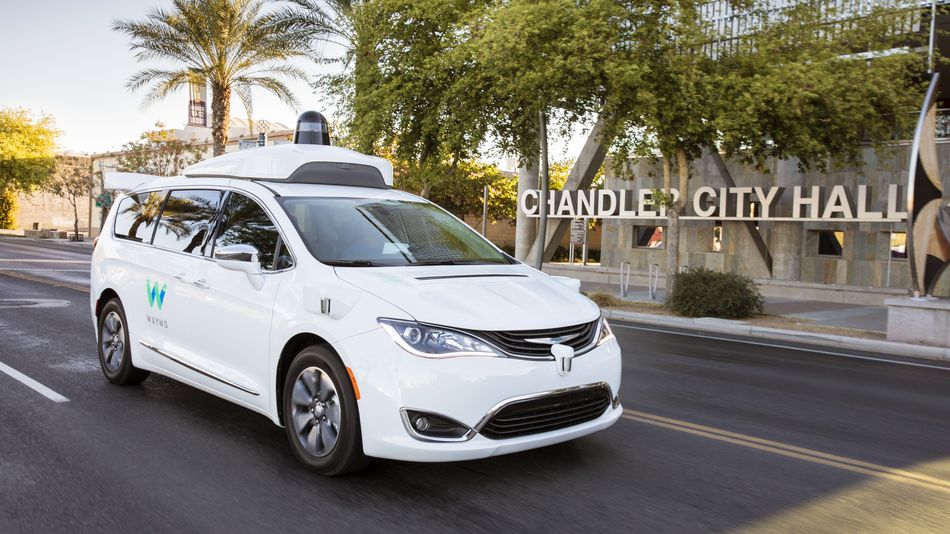Technology
What happened when Waymo reenacted real fatal car crashes with its autonomous vehicle


Waymo’s autonomous vehicles were put through the gnarly paces of 72 simulations of fatal crashes for safety research.
The Google spinoff company, which operates its self-driving car service in the area just outside Phoenix, released a study Monday showing how its autonomous vehicles would respond during unsafe driving situations. The company collected crash information from 72 real fatal crashes with human drivers at the wheel that took place in the Chandler, Arizona, area between 2008 and 2017. Researchers reconstructed them in a virtual simulation, with the Waymo vehicle replacing both the car that initiated the crash (called “the initiator” in the study) and the car responding (“the responder”).
With Waymo replaced virtually in both positions of the crash, the company ran enough simulations (91 of them, to be exact, since some of the crashes involved just one car) to understand how its autonomous platform would respond in the situation. Notably: They wouldn’t crash.
Trent Victor, Waymo’s director of safety research and best practices, summed up the results: Waymo is “capable of driving safely on its own and responding effectively when people make mistakes.”
With Waymo as the initiator, the results weren’t too surprising. As Victor said in a briefing, the vehicle “doesn’t drive drunk or drowsy” and follows all rules of the road. In 2019, the U.S. reported 10,142 deaths from drunk driving crashes. The simulated Waymo was able to avoid 100 percent of crashes when it was replaced as the vehicle that caused the crash. That included 20 crashes that involved a pedestrian or a cyclist.
When the Waymo vehicle had to react to a dangerous driving situation, it was able to avoid or reduce the severity of the crash every time. As the responder, it completely avoided 32 crash simulations. In 20 of the simulations, the vehicle didn’t use an evasive maneuver, meaning the car didn’t have to make a big movement.
One of the real crashes reconstructed involved the initiator vehicle going 107 mph with an intoxicated driver who ran a red light. The responder vehicle was going 35 mph when it was struck. The driver died, while the initiator driver suffered injuries.
With Waymo replaced as both vehicles, in both scenarios the crash was no longer deadly. As the initiator, Waymo was driving the speed limit and didn’t run the light, so the crash never happened. As the responder to the drunk driver, the Waymo vehicle was able to get out of the way and avoided the fatality that occurred in real life.
Dr. Steven Shladover, a semi-retired research engineer at UC Berkeley’s California Partners for Advanced Transportation Technology program, said in a phone call that the study is a useful contribution to autonomous vehicle safety research.
To him, it shows that the autonomous software and sensor suite on the vehicles are “able to respond successfully to bad behavior of other drivers.”
Waymo’s study comes out after AAA’s annual autonomous vehicle survey found that 86 percent of American adults are still afraid or unsure about riding in a self-driving vehicle.
-

 Business5 days ago
Business5 days agoTesla’s new growth plan is centered around mysterious cheaper models
-

 Business6 days ago
Business6 days agoUnitedHealth says Change hackers stole health data on ‘substantial proportion of people in America’
-

 Business7 days ago
Business7 days agoMood.camera is an iOS app that feels like using a retro analog camera
-

 Business4 days ago
Business4 days agoXaira, an AI drug discovery startup, launches with a massive $1B, says it’s ‘ready’ to start developing drugs
-

 Business5 days ago
Business5 days agoUK probes Amazon and Microsoft over AI partnerships with Mistral, Anthropic, and Inflection
-

 Entertainment7 days ago
Entertainment7 days agoFurious Watcher fans are blasting it as ‘greedy’ over paid subscription service
-

 Business6 days ago
Business6 days agoTwo widow founders launch DayNew, a social platform for people dealing with grief and trauma
-

 Entertainment5 days ago
Entertainment5 days agoTesla’s in trouble. Is Elon Musk the problem?






















